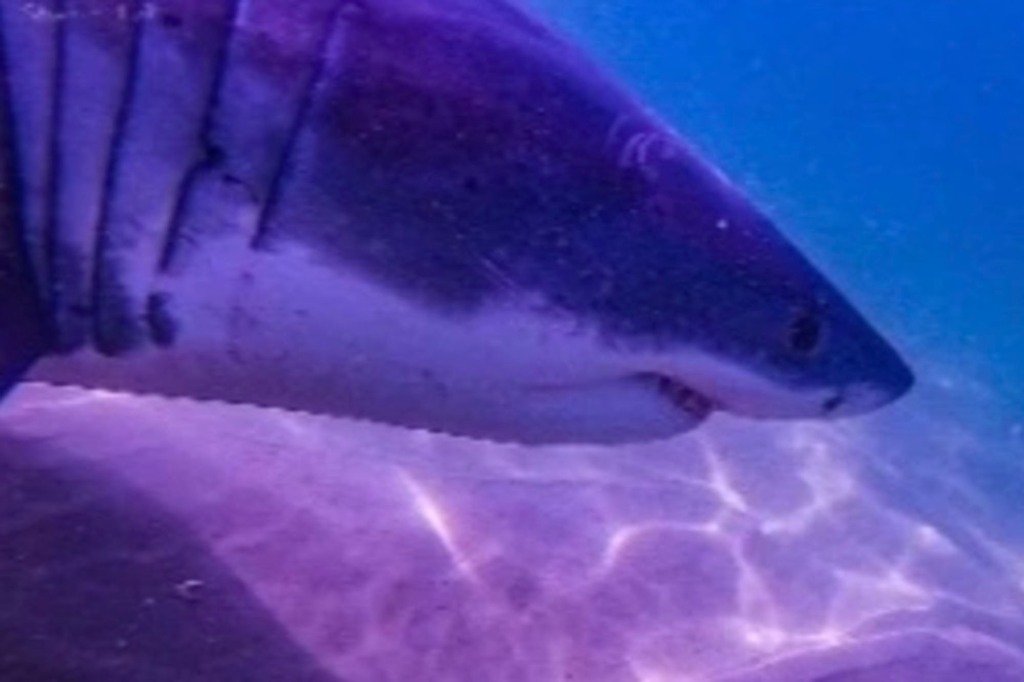4 great white sharks spotted in two days off Cape Cod
This is “Jaws”-dropping.
Just when you thought it was safe to go back in the water, four great white sharks were spotted over three days off the New England coast amid a spate of attacks along the Eastern Seaboard.
The quartet of apex predator sightings were recorded from Cape Cod via the Massachusetts-based Sharktivity app, which tracks great white activity, the Sun reported.
“Just know that large sharks are here,” Megan Winton, a scientist with the Atlantic White Shark Conservancy, said during a press conference in Chatham on Wednesday, USA Today reported. “They’re a constant presence from June to the fall.”
The first sighting occurred on July 11, of an 11-foot great white shark — which is the largest predatory fish, growing to 21 feet long and weighing up to 5,000 pounds — in Chatham Harbor. The following day, a shark whom conservators had previously dubbed Luke was detected swimming near the beach in the Gulf of Maine.
In the most recent two sightings, on July 13, a shark named Granese was recorded off Nauset Beach, while another named Kendal was also seen.
The sightings come amid a rash of attacks off the East Coast this month. Earlier today, Long Island’s Smith Point Beach was shuttered after a 41-year-old surfer was bitten on the leg by what he believed was a sand tiger shark, NBC New York reported.
This marked the beach’s second closure this month, following an instance two weeks ago after an attack involving a Long Island lifeguard. The victim, named Zack Gallo, had been bitten in the chest and right hand by a 4- to 5-foot-long shark while conducting an ocean training exercise.
“I felt sharp, sharp pain and I knew it was some kind of … once I felt the rubbery texture, I knew it was some kind of shark,” said Gallo, recalling the ordeal.

Fortunately, the lifeguard said he was able to fight off the shark by “punching down” on it.
“I hit the shark three times,” he explained. “I went boom, boom, boom. Guess in the third one it spun back and its tail hit me in the chest.”

Unfortunately, this spike in shark activity along the Northeast might not be anecdotal. Long Island has seen a veritable sharknado of sightings, with a record-setting 26 spotted last summer in Nassau County alone. Meanwhile, great white shark detections off the Cape jumped 24% in 2021 from the previous year and have increased every year since 2013, according to data posted by the Atlantic White Shark Conservancy, the Boston Globe reported.
However, experts say the surge in sightings could simply be due to recent advances in shark-tracking technology.
“We know these sharks have been in this area for a long, long time … millions of years,” Jon Dodd, executive director of the Rhode Island-based Atlantic Shark Institute, told the Globe. “We’re getting much better at detecting them.”
Long Island fisherman Luke Alter, 25, believes that there are the same number of sharks that there have always been. “People are just now starting to become aware of it because of social media,” he said.
Interestingly, in the event that sharktivity is on the rise, scientists believe that it can only be a good thing. Cleaner oceans, warmer water temperatures and a resurgence of bunker fish that sharks feed on are seen as factors, according to experts.
“There are a lot more sharks than 10 or 15 years ago,” said Christopher Paparo, manager of Stony Brook University’s Marine Sciences Research Center. “We’re spotting sharks, whales and dolphins here. In the 1960s, we did not have sharks, whales and dolphins.”
This glut of marine life was epitomized by last summer’s Big Apple bluefin boom, in which anglers were landing 600-pound tuna just several miles off of New York City.
Read the full article Here


